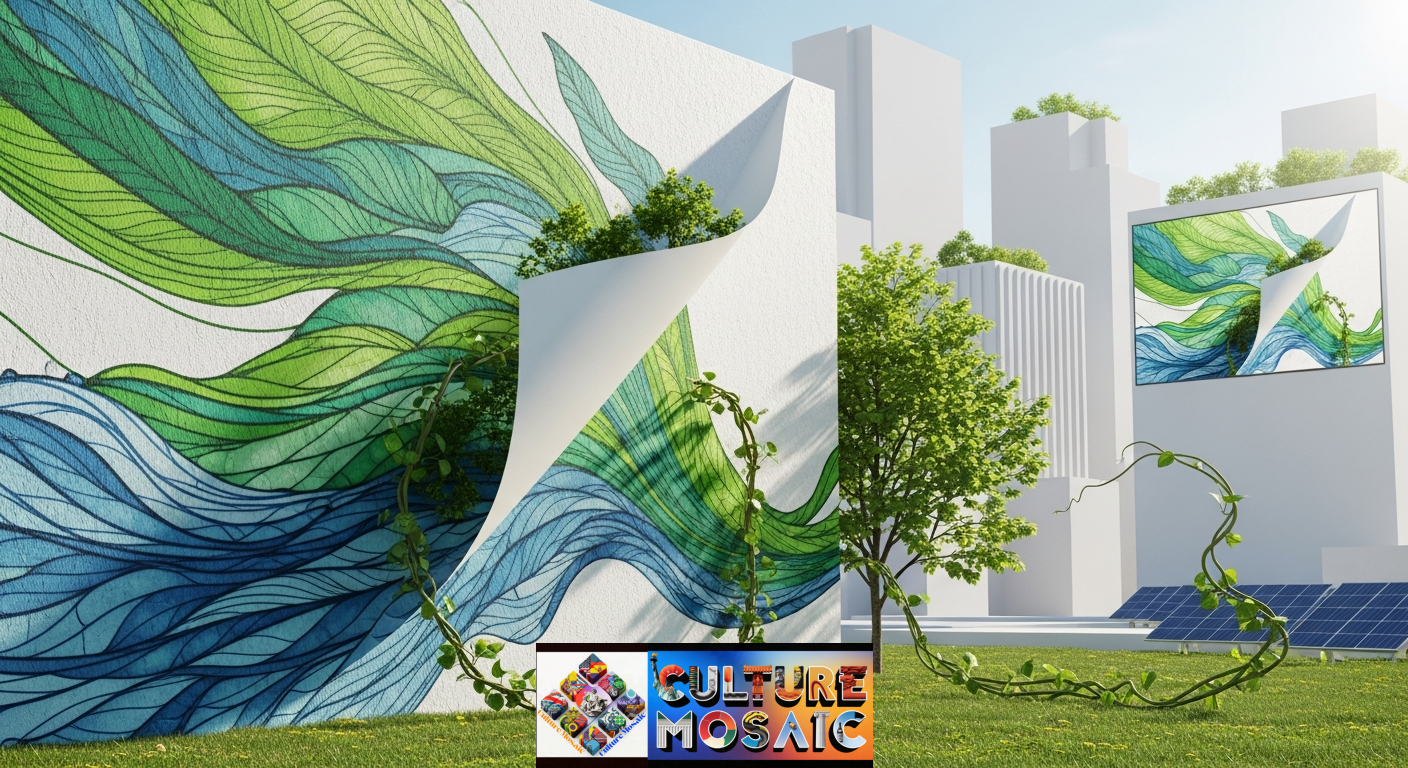How Sustainability and Design Coexist in Modern Advertising
In an era where consumers demand both creativity and conscience, modern advertising is undergoing a profound transformation. Businesses are no longer judged solely on the brilliance of their campaigns but also on the responsibility of their materials and methods. The challenge (and opportunity) lies in balancing eye-catching design with sustainable practice.
This shift isn’t just a passing trend; it represents a fundamental rethinking of how advertising is conceived, produced, and displayed. Let’s explore how sustainability and design are working together to create a new generation of environmentally aware yet visually striking advertising.
Rethinking Materials: The Foundation of Responsible Advertising
The most visible change in modern advertising begins with materials. Traditional advertising banners, posters, and displays were often made using PVC and other non-recyclable plastics. While effective and durable, these materials contributed significantly to waste once campaigns ended.
Today, innovative manufacturers are leading a shift toward eco-friendly alternatives that perform just as well (if not better) than their predecessors. Options such as PVC-free materials have revolutionised large-format printing. They offer the same vivid colour reproduction, flexibility, and durability while being far more environmentally responsible.
One prime example is the use of frontlit banners. These sustainable materials allow for exceptional visual impact without relying on harmful plastics. By eliminating PVC from their composition, these banners reduce environmental harm while maintaining the premium look and resilience that modern campaigns demand.
This small but significant change demonstrates how sustainability doesn’t have to mean compromise. It can, instead, elevate the quality and perception of a brand.
Designing with Purpose: Creativity That Considers the Planet
Great design has always been about communication, but now, it’s also about consideration. Designers are becoming more conscious of the environmental impact of their work, from concept through to production. This mindset encourages efficiency: using fewer resources, minimising waste, and choosing materials that are lighter, recyclable, or reusable.
Sustainability in design also extends to how campaigns are displayed. Modular exhibition systems, for instance, can be reused and reconfigured for different events. Similarly, sustainable inks and water-based coatings ensure that printed visuals have minimal ecological impact without sacrificing vibrancy or quality.
In this context, creativity becomes an ally of the environment. By thinking differently, like designing smarter layouts, optimising colour use, and planning for reusability, brands can produce advertising that is both beautiful and responsible.
Consumer Perception: Why Sustainability Adds Brand Value
The modern consumer is informed and values-driven. Studies show that people are more likely to engage with brands that demonstrate environmental responsibility. In other words, sustainability is part of a brand’s identity.
Advertising plays a key role in conveying this identity. When a company chooses sustainable materials or promotes its eco-friendly approach through design, it sends a message of authenticity and care. The use of recyclable or PVC-free banners, for instance, signals a brand’s commitment to long-term responsibility rather than short-term impact.
This connection between visual storytelling and environmental action helps build trust. Customers not only remember what a business sells but also respect how it operates.
Technology Meets Eco-Innovation
The rise of digital printing technologies has made sustainable advertising more accessible than ever. High-efficiency printers now allow for reduced ink consumption, lower energy use, and precision printing that cuts waste. Pairing these innovations with responsibly sourced materials ensures campaigns have a smaller carbon footprint without diminishing quality.
Moreover, new advances in biodegradable substrates and recyclable fabrics mean that even large-scale outdoor displays can be produced with minimal environmental cost. The combination of innovation and intent allows brands to maintain their visual edge while aligning with global sustainability goals.
A New Era of Conscious Creativity
The future of advertising lies at the intersection of imagination and integrity. As businesses strive to reduce their environmental impact, the creative industry is proving that sustainability and design can coexist (and even thrive) together.
By integrating eco-conscious thinking into every stage of the process, from material selection to visual execution, brands are redefining what effective advertising looks like. The result? Campaigns that not only capture attention but also contribute to a cleaner, more responsible planet.
With sustainable solutions, the advertising world is discovering that doing good and looking good are no longer at odds; they’re part of the same vision for a brighter, greener future.

